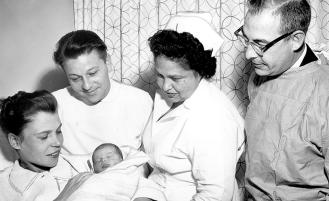Managing Your Diabetes During Ramadan
On March 22, 2023, the Muslim holy month of Ramadan began following sundown. This month-long celebration typically includes prayer, reflection and daily fasting from dawn to sunset. Overlake diabetes educator Karla Courter, BSN, RN, shares her recommendations for those with diabetes observing Ramadan.
Speak with your doctor.
Ideally, you would speak with your doctor about a plan before the start of Ramadan. Knowing how often to monitor your blood sugar and how to adjust your medication schedule is essential. Your physician may recommend individual consultations with a diabetes nurse educator and registered dietitian. Overlake’s diabetes education team can help you work to develop a meal plan that fits your taste and lifestyle.
It is important to note that some groups are exempt from fasting during Ramadan, including pregnant women, breastfeeding mothers, the elderly, prepubescent children and those with chronic illnesses.

Continue eating balanced meals.
Aim to eat a balanced meal before sunrise and avoid overeating after sunset. Use the American Diabetes Association’s (ADA) Diabetes Plate Method as a guide: fill half your plate with non-starchy vegetables, one-quarter with protein and one-quarter with carbohydrates. It’s also important to remember to maintain hydration. Ask your doctor how much water or other fluids you should drink to stay hydrated.
Know how to identify and treat high or low blood sugar levels.
Speak with your doctor about specific instructions on how often to monitor blood glucose during Ramadan. It’s also crucial to know how to treat high and low blood sugar and be aware of the symptoms of each.
- Symptoms of hyperglycemia or high blood sugar—a blood glucose above 300 mg/dL or above your specific target—include increased thirst, increased urination or blurry vision. If you take insulin, know when or if to inject insulin during the fasting period. Have a plan for adjusting the timing or dosage of oral or injectable diabetes medications, as needed.
- Symptoms of hypoglycemia or low blood sugar—blood glucose under 70 mg/dL or below your specific target level—include feeling shaky, sweaty, fast heartbeat or confusion, nervousness or hunger. If hypoglycemia occurs during fasting, the fast should be broken to prevent serious complications. Treat low blood sugar with 15 grams of carbohydrates, such as four ounces of regular juice or glucose tablets, and recheck your levels after 15 minutes. If your levels are still low, repeat until your blood sugar rises to above 70 mg/dL.
Overlake offers one-on-one education as well as two-part classes to help people learn practical skills to manage diabetes, including medication, meal planning, glucose monitoring and more. Classes are taught by certified diabetes educators. Please see your healthcare provider for a referral. Learn more about diabetes education at Overlake or call 425.688.5111.








